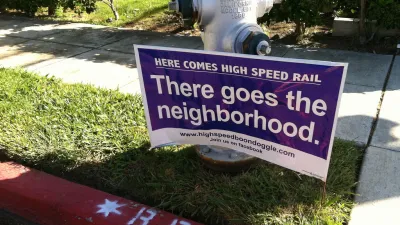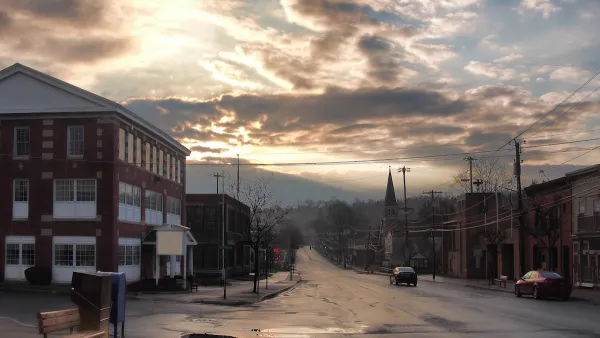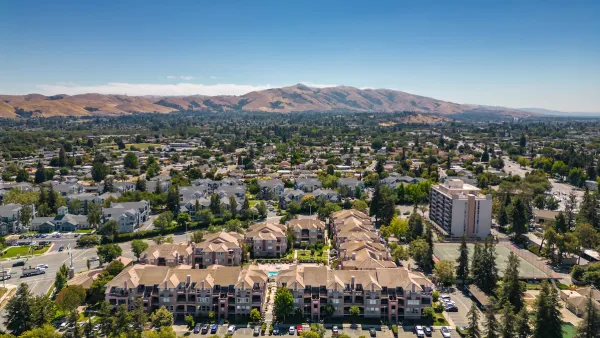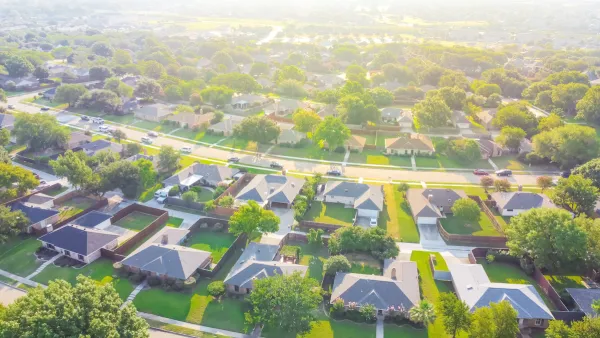Why should people have veto power over anything built in their neighborhood?

A recent Planetizen headline said: "Denver Planning Board Steamrolls Opposition in Rezoning Controversy." I am guessing that the headline used the perjorative term "steamrolls" because neighborhood activists opposed the rezoning. The story summary was even more negative, using the term "top-down planning" to describe a city decision that actually expanded a landowner's right to build on its property by allowing it to build five stories instead of three.
Why would anyone think expanding personal freedom is "top-down planning"? Probably because the author of the headline and summary shared a widespread cultural assumption: that we have a property right to veto whatever happens within a few blocks of our homes, even if we did not pay for the property in question.
Where did this idea come from? Probably from the perfectly reasonable idea that people are affected by "externalities" arising from how others used nearby property. At one time, this idea might have limited to the most obvious externalities such as odor and pollution from a factory.
But in the 20th century, zoning enabling acts and zoning codes gave city councils virtually unlimited discretion to regulate land development. Since city councillors have to run for reelection, they began to heed the voice of NIMBY (Not In My Back Yard) activists in their districts.
And because NIMBY activists had so much power over development, they used that power to interpret the concept of externalities so broadly that nearly anything could be interpreted as an externality. If a project is more affordable than the rest of the neighborhood, that is now an externality, because it could lower property values or worse still, bring in poorer people (who would not only lower property values, but create all manner of mayhem). If the project is more expensive, that's equally bad: it could lead to something called "gentrification." Even if the project is neither more or less affordable than the rest of the neighborhood, neighbors can always find an aesthetic ground to object: if the project is not identical to the existing monoculture, it is "out of character" with the neighborhood.
Ultimately, the neighborhood veto creates its own externalities, thus defeating its own reason for existence. If NIMBYs can outlaw any new construction, society ultimately only has two alternatives. First, society can make new housing impossible, causing housing prices to explode. This strategy has been followed in San Francisco, where new housing construction is virtually forbidden. At the height of the housing boom in 2005, the city granted 1.2 housing permits per 10,000 people- less than one-twentieth the state average. (Even Detroit had more, despite the fact that Detroit lost 1/4 of its population during the 2000s). Not surprisingly, San Francisco is much more expensive than other mid-sized cities. Second, society can allow new housing where there is no one to object- that is, in farmland. This leads to lots of new housing in places without public transit, thus causing lots of greenhouse gas emissions and other forms of pollution, and increasing everyone's transportation costs.
It could be argued that neighbors have relied on the status quo. But this argument is a self-fulfilling prophecy: if the political process tells people that they can veto any nearby development, of course they will think this is a normal state of affairs. Moreover, the costs of the NIMBY veto itself destroys the reliance interests of others: those of us who settle in a region expecting not to be driven out by sky-high housing costs, or who expect to live without lung cancer and other negative results of regionwide and worldwide pollution.
It therefore seems to me that the NIMBY veto has outlived its usefulness, and that neighbors' "right" to veto nearby development has been so widely abused that it should be eliminated. The more difficult question (for me) is: what procedural mechanisms do we create to eliminate this veto?

Analysis: Cybertruck Fatality Rate Far Exceeds That of Ford Pinto
The Tesla Cybertruck was recalled seven times last year.

National Parks Layoffs Will Cause Communities to Lose Billions
Thousands of essential park workers were laid off this week, just before the busy spring break season.

Retro-silient?: America’s First “Eco-burb,” The Woodlands Turns 50
A master-planned community north of Houston offers lessons on green infrastructure and resilient design, but falls short of its founder’s lofty affordability and walkability goals.

Test News Post 1
This is a summary

Analysis: Cybertruck Fatality Rate Far Exceeds That of Ford Pinto
The Tesla Cybertruck was recalled seven times last year.

Test News Headline 46
Test for the image on the front page.
Urban Design for Planners 1: Software Tools
This six-course series explores essential urban design concepts using open source software and equips planners with the tools they need to participate fully in the urban design process.
Planning for Universal Design
Learn the tools for implementing Universal Design in planning regulations.
EMC Planning Group, Inc.
Planetizen
Planetizen
Mpact (formerly Rail~Volution)
Great Falls Development Authority, Inc.
HUDs Office of Policy Development and Research
NYU Wagner Graduate School of Public Service





























